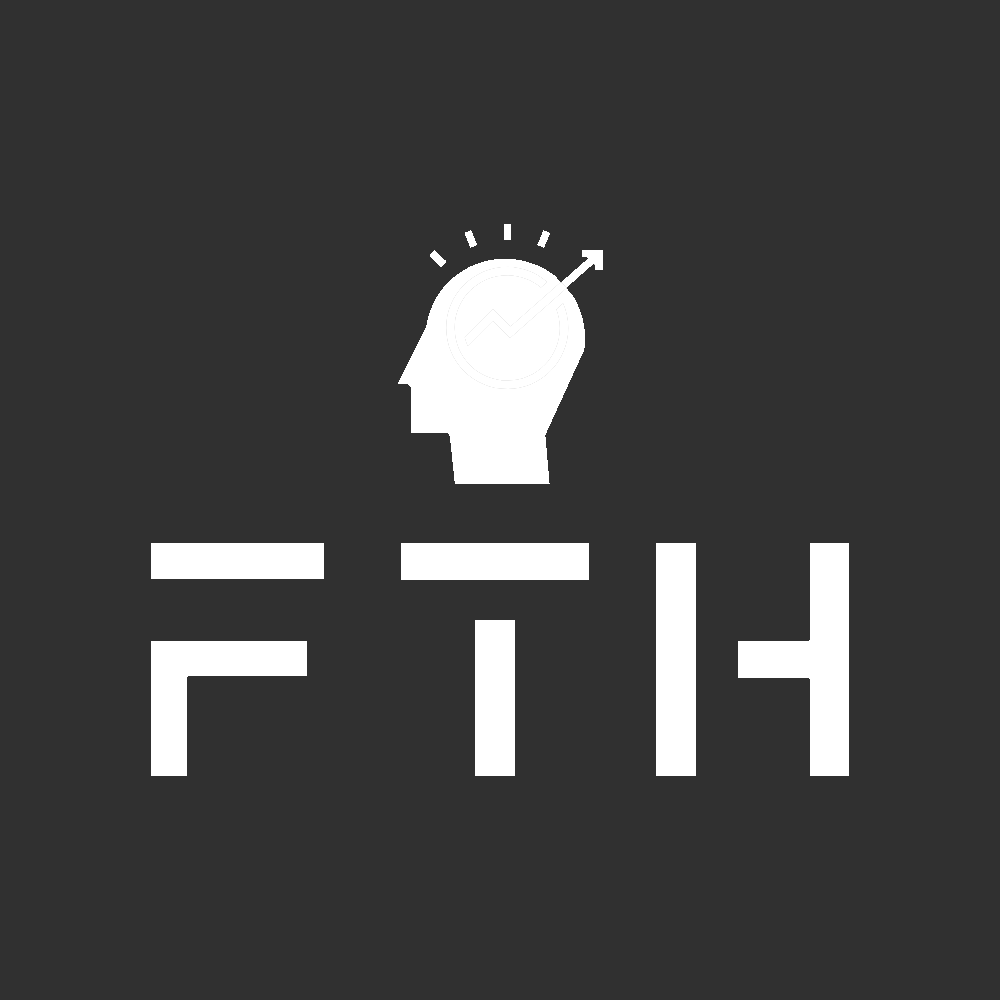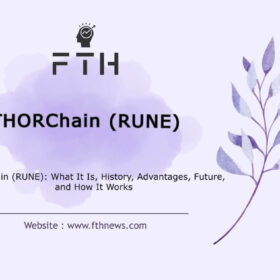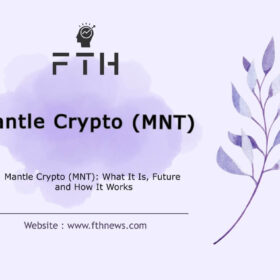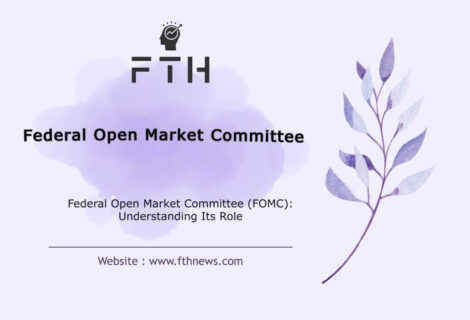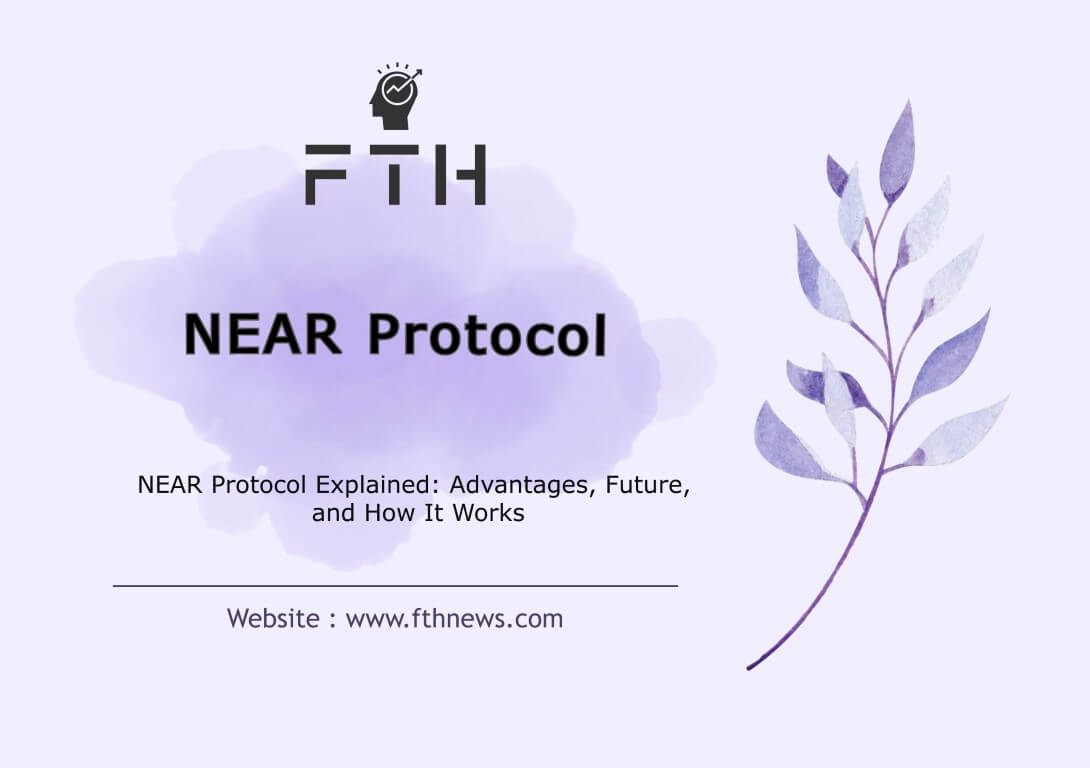
NEAR Protocol Explained: Advantages, Future, and How It Works
What is NEAR Digital Currency?
NEAR Protocol digital currency, represented by the symbol NEAR, is the native token of the NEAR ecosystem. Functioning as an ERC-20 token, NEAR boasts a maximum supply of 1 billion and was introduced with the primary goal of enhancing transaction speed and reducing network costs.
The Challenge of Scalability:
The scalability challenge, a hurdle encountered by many blockchain networks, became prominent as transaction volumes surged, requiring consensus mechanisms to confirm each transaction. Addressing this issue, the NEAR protocol employs cutting-edge sharding technology to significantly boost scalability.
Proof of Stake and Staking:
NEAR operates on the Proof of Stake algorithm, requiring individuals to acquire NEAR digital currency and lock it on the network to participate. This innovative approach, known as staking, allows participants to reap the benefits of their involvement in the network.
The Origins and Vision: Founders of NEAR Protocol
Conceived in 2017 by computer engineers Alexander Skidanov and Ilya Polosukhin, NEAR Protocol initially started as a machine learning project. However, recognizing scalability challenges within blockchain during their research, the duo pivoted, establishing the NEAR protocol as a dedicated platform for blockchain development. The project drew inspiration from the science fiction novel, “The Singularity Is Near.”
The mainnet of the blockchain commenced operations in April 2020, with network validators confirming the release of token transfers in October 2020.
Understanding the NEAR Protocol
NEAR stands out as a next-generation Layer 1 blockchain, operating on the Proof of Stake (PoS) protocol. Its mission revolves around creating a scalable ecosystem and fostering the development of decentralized applications (DApps), presenting a compelling alternative to established players like Ethereum.
Addressing Scalability:
Scalability, a persistent challenge faced by blockchain networks, is a focal point for the NEAR protocol. In a bid to rival Ethereum and other smart contract blockchains like Polkadot, the protocol employs innovative solutions to ensure seamless transaction processing.
Features of NEAR Protocol:
- Incorporation of New Technologies: The NEAR protocol leverages cutting-edge technologies such as Nightshade, not only drastically improving transaction processing speed but also effectively solving the scalability predicament.
- Developer-Centric Approach: Developers find the NEAR protocol attractive due to the ability to write smart contracts and earn a percentage of gas fees from users. This incentivizes developers and contributes to a vibrant ecosystem.
- User-Friendly Interface: The simplicity of the NEAR protocol’s user interface makes it highly desirable for users. The ease of creating decentralized applications (DApps) has attracted a substantial user base.
- High-Level Security: The use of the Proof of Stake (POS) consensus algorithm in NEAR’s blockchain, coupled with a distributed network of validators, ensures a robust security framework, placing the NEAR network at a high level of security.
As we delve deeper into the world of NEAR, its innovative features and commitment to overcoming blockchain challenges position it as a promising player in the ever-evolving landscape of digital currencies and decentralized applications. Stay tuned for further exploration of NEAR’s capabilities and impact on the blockchain ecosystem.
How Does NEAR Protocol Work?
In tackling the scalability challenge, NEAR Protocol takes a distinctive route compared to Ethereum’s layer 2 solutions. Rather than enhancing the existing blockchain, NEAR opted to build an entirely new blockchain. The NEAR protocol introduces a solution to scalability through the implementation of sharding.
Sharding involves dividing the network into smaller pieces, known as shards, to reduce the computing load. Nodes are assigned to different shards, alleviating them from the responsibility of validating all transactions. This parallel processing significantly increases the network’s capacity, promoting efficiency.
Proof-of-Stake Consensus Mechanism
To achieve consensus among network nodes, NEAR Protocol employs a Proof-of-Stake (PoS) consensus mechanism. In this system, nodes interested in validating transactions must stake NEAR tokens. Token holders who choose not to participate in node validation can transfer their stake to other validators. Typically, validators with a higher staked token amount wield more influence in the consensus process.
Dynamic Re-Sharding
NEAR employs horizontal scaling through sharding, specifically dynamic re-sharding. Unlike traditional blockchains that use either horizontal or vertical partitioning, NEAR’s dynamic re-sharding adapts to user demand by adjusting the number of shards. This demand-driven approach optimizes scalability, ensuring that the network only pays for the infrastructure and scaling required at any given time.
Nightshade Consensus Mechanism
NEAR utilizes Nightshade, a unique approach to consensus and inter-shard transactions settlement. In contrast to many sharded networks using a small validation group, Nightshade assigns the task of producing each block to a validator in a leader-based system. Validators collect and assemble chunks produced by each shard into a block during their leadership period. This innovative approach improves efficiency and reduces the complexities associated with traditional validation processes.
DoomSlug for Practical Finalization
DoomSlug, a novel technique within NEAR Protocol, contributes to achieving practical finalization after a communication period. With a Finality Gadget ensuring Byzantine Fault Tolerance (BFT) certainty, DoomSlug secures irreversible blocks. As long as more than half of the validator pool is online and acting honestly, DoomSlug continues generating and finalizing blocks. If online participants fall below two-thirds, the finalization gadget halts.
Developer Rewards and Token Balance
The NEAR Protocol incentivizes developers by allocating 30% of transaction fees to contracts involved in a transaction. Contract owners, typically developer groups or DAOs, have autonomy in determining the allocation of these funds, fostering a vibrant development environment. Additionally, NEAR token holders enjoy the right to store data on the NEAR blockchain, with storage space directly proportional to their token balance. This approach aligns with a model similar to bank accounts, reinforcing the security of stored data.
As NEAR Protocol continues to evolve, these innovative features position it as a dynamic and scalable blockchain, offering solutions to some of the most pressing challenges in the blockchain ecosystem. Stay tuned for further insights into NEAR’s development and impact on the decentralized landscape.
The Multifaceted Utility of NEAR Cryptocurrency in the NEAR Network
NEAR cryptocurrency, at the core of the NEAR network, serves a diverse range of essential functions, with some of the most significant ones including:
- Governance Participation: Holders of NEAR cryptocurrency play a pivotal role in the governance of the network. Through voting on decisions and proposing platform-related initiatives, they actively shape the future trajectory of the NEAR ecosystem.
- Network Fee Payment: NEAR facilitates seamless transactions within the network by serving as a means to pay various network fees. This utility ensures a smooth and efficient user experience while engaging with the NEAR platform.
- Validator Engagement: Validators, integral to the transaction verification and network security process, require NEAR for active participation. From validating transactions to constructing new blocks, NEAR cryptocurrency is an essential element in maintaining the robustness and integrity of the NEAR network.
- DApp Creation and Management: NEAR provides users with the capability to effortlessly create and manage decentralized applications (DApps) within an optimal environment. This fosters a user-friendly and innovative ecosystem for the development and utilization of decentralized applications on the NEAR platform.
The versatility of NEAR cryptocurrency underscores its significance as a driving force behind the functionality and growth of the NEAR network, making it a key asset for participants ranging from governance contributors to developers and users alike.
NEAR Currency Wallets
As NEAR currency gains prominence, a variety of wallets have emerged to facilitate seamless transactions and secure storage. Among the notable NEAR currency wallets are:
- Rust Wallet
- Math Wallet
- Binance
However, standing out as the official wallet developed by the NEAR project’s team, the NEAR Wallet takes the lead. This wallet not only supports secure storage of NEAR tokens but also allows users to engage in network staking, enhancing the utility of their holdings.
Investors of the NEAR protocol project
The success and growth of the NEAR protocol have garnered significant attention from various companies and investment funds. Noteworthy investors in the NEAR protocol project include:
- Blockchain.com Ventures
- CoinFund
- Coinbase Ventures
- Dragonfly Capital
- Fundamental Labs
- Homebrew
- IDEO Colab (Research and Development company)
- MetaStable Capital
- Multicoin Capital
- Pantera Capital (focuses on tokens and blockchain-related projects)
- Xpring (from Ripple functions, blockchain infrastructure developer)
- a16z crypto (investment arm of Andreessen Horowitz in blockchain and digital currencies)
These reputable entities have chosen to invest in the NIR protocol due to its promising vision and innovative approach, further solidifying confidence in the project’s potential.
Features of NEAR Protocol Digital Currency
The NEAR protocol digital currency offers a suite of distinctive features, setting it apart in the cryptocurrency realm:
- Compatibility with Ethereum: NEAR currency seamlessly integrates with Ethereum, ensuring a harmonious coexistence and interoperability between the two blockchain platforms.
- Ultra-Low Transaction Fees: Users benefit from remarkably low transaction fees, with quantification achieved through the yocto unit, facilitating cost-effective transactions.
- Proof of Stake Mining: NEAR operates on the Proof of Stake protocol, enabling mining activities that are both energy-efficient and sustainable, contributing to a greener blockchain network.
- Open Source and Fully Decentralized: As an open-source project, NEAR Protocol is fully decentralized, embodying transparency and inclusivity within its ecosystem.
- DApp Creation and Management: NEAR empowers users to seamlessly create and manage decentralized applications (DApps), offering developers a user-friendly environment for innovation.
- Simplified Access: The NEAR platform ensures easy registration and application access, eliminating the need for keys or browser extensions and enhancing user accessibility.
- WebAssembly Compatibility: NEAR’s smart contracts are compatible with the WebAssembly Virtual Machine, ensuring efficient and versatile programming capabilities.
- Flexible Transaction Fees: NEAR digital currency provides users with flexibility through transaction fees ranging from 0.08% to 0.2%, accommodating various preferences.
- Withdrawal Fee: Users can expect a clear and straightforward withdrawal fee of NEAR 0.1, offering transparency in associated costs.
- Developer and User-Friendly Design: NEAR is designed with a focus on both developers and users, providing an intuitive and accessible platform, even for those with limited technical knowledge.
Advantages of NEAR Protocol Digital Currency
- User-Friendly Accessibility: NEAR is accessible to users with varying levels of technical expertise in blockchain technology.
- Modular Development: NEAR provides developers with modular components, streamlining project implementation and tracking.
- Infinite Scalability: NEAR leverages advanced sharding technology, ensuring limitless scalability for the blockchain network.
- Robust Security: The blockchain maintains high-security standards, instilling trust and reliability.
- Cost-Effective Gas Fees: NEAR boasts lower gas fees compared to Ethereum, contributing to overall cost efficiency.
Disadvantages of NEAR Protocol Digital Currency
- Competition with Established Giants: NEAR faces direct competition with major players like Ethereum in the cryptocurrency space.
- Rapidly Evolving Landscape: In the dynamic cryptocurrency landscape, NEAR encounters competition from emerging technologies and platforms.
How to Stake in NEAR Protocol Blockchain
To become a validation node in the NEAR Protocol blockchain, staking your NEAR tokens is a crucial step. The specific amount required for staking is contingent on the tokens staked by other validators within the shard. Here’s a step-by-step guide:
- Minimum Requirement: Each shard on the NEAR blockchain consists of 100 seats. To become a validator, you must secure at least one position. The cost of each position is determined based on the total amount of NEAR staked in the shard.
- Cost Calculation: To calculate the cost of a slot, divide the total tokens staked in a shard by 100. This provides the individual cost per slot, which validators need to cover to participate in the network.
- Penalties for Errors: In the event of an error from a validator, a portion of their staked tokens is forfeited as a penalty. This mechanism ensures accountability and adherence to the protocol.
- Withdrawal Flexibility: Validators and representatives of stake pools can withdraw their staked tokens from the network at any time, providing flexibility and liquidity.
- Collaboration with Stake Pools: If capital constraints prevent acquiring a slot, potential validators can collaborate with representatives of stake pools to obtain the required tokens.
NEAR Protocol Digital Currency on Exchanges
NEAR Protocol’s digital currency is actively supported on reputable exchanges, including Binance, Huobi Global, OKEx, and more. This widespread exchange support enhances accessibility and liquidity for NEAR token holders.
NEAR Protocol Digital Currency Projects
Since the launch of the NEAR mainnet, numerous projects have flourished on the platform, showcasing its versatility. Notable projects include:
- Flux: Launched in August 2020, Flux is a decentralized and open market protocol operating on the NEAR blockchain.
- Mintbase: A platform simplifying the issuance and sale of NFTs, making the process straightforward and cost-effective.
- Paras: An NFT marketplace focusing on high-quality works created by select artists, contributing to the vibrant ecosystem on the NEAR blockchain.
As NEAR continues to attract diverse projects, its ecosystem thrives with innovation and decentralized applications, cementing its position as a dynamic and promising blockchain platform.
In Conclusion: A Glimpse into the Future
Now equipped with an understanding of the NEAR protocol’s purpose and trajectory in the blockchain and digital currency realm, it’s evident that NEAR strives to be a unique platform for smart contracts and decentralized applications.
In its nearly two years of existence, NEAR has successfully attracted a diverse community of investors, developers, users, and traders. The surge in the NIR token’s price has amplified its appeal in the trading sphere, contributing to its widespread adoption.
As NEAR continues to navigate the dynamic landscape of blockchain technology, its commitment to resolving scalability challenges through innovative technologies like sharding and storage solutions remains a pivotal strength. While time will reveal the full extent of NEAR’s success in achieving its ambitious goals, the project undeniably holds promise for the future.
NEAR protocol stands as a beacon among projects, showcasing potential avenues for further growth and development in the ever-evolving blockchain space. The journey of NEAR is one to watch, and its impact on the blockchain ecosystem may unfold in ways that reshape the industry.


